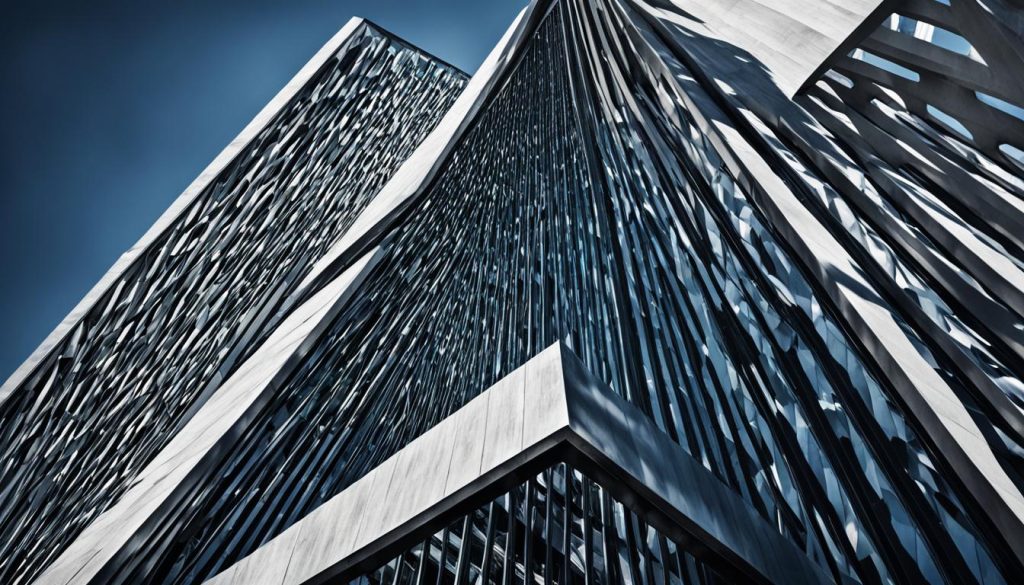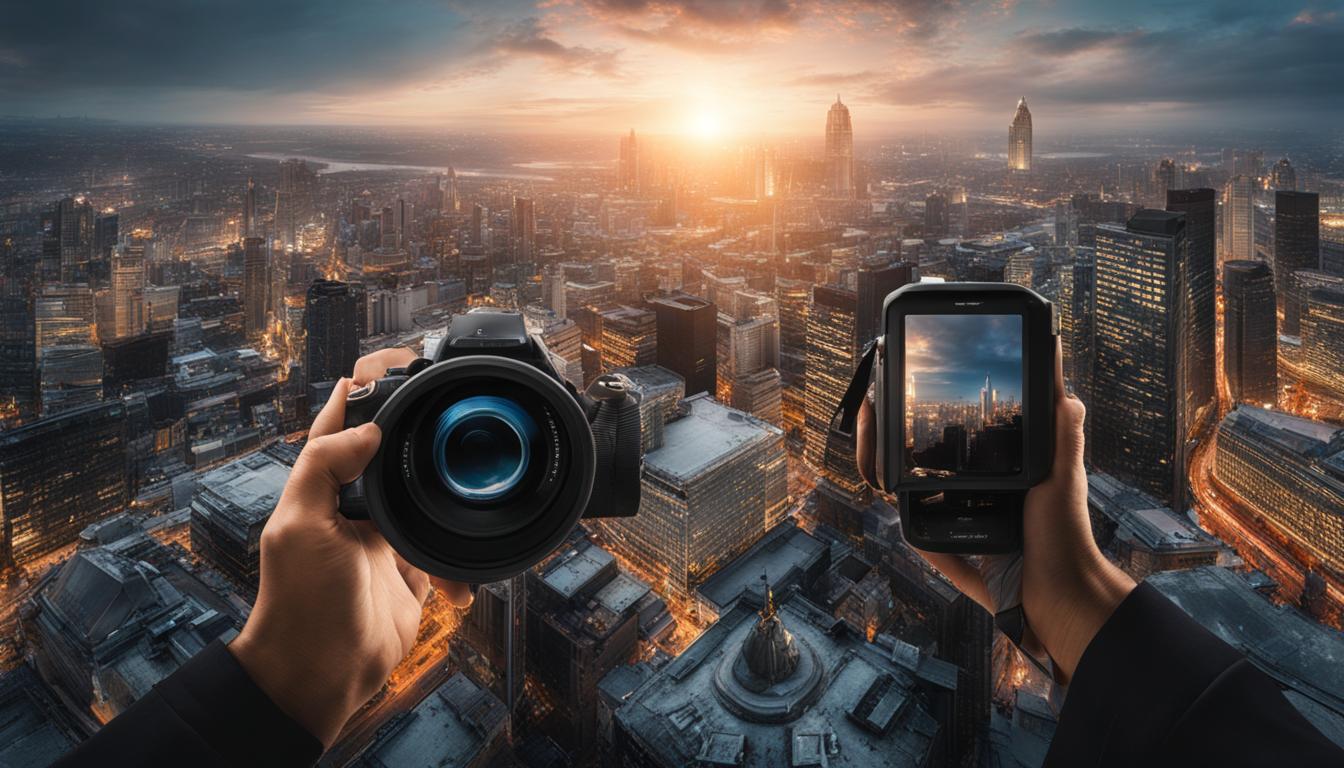Architectural photography is a unique form of art that requires precision, attention to detail, and a keen eye for capturing the beauty of structures. Whether you’re an experienced photographer or just starting, this comprehensive checklist guide is here to help you capture stunning architectural photographs.
In this guide, we’ll explore the fundamentals of architectural photography and provide an essential checklist to help you capture exceptional shots. From understanding composition and lighting techniques to practical tips for capturing intricate details and unique perspectives, this guide has got you covered.
Key Takeaways
- Architectural photography requires precision and attention to detail
- This comprehensive checklist guide will enhance your architectural photography skills
- Understanding composition and lighting techniques can greatly enhance your final results
- Proper planning and preparation play a crucial role in capturing great architectural photographs
- Practical tips and techniques can help you capture intricate details and unique perspectives of structures
Understanding Architectural Photography
Architectural photography is an art form that involves capturing stunning images of buildings and structures. This type of photography focuses on showcasing the design and character of a building by emphasizing its unique features, lines, and shapes. Architectural photography is widely used in real estate, construction, and design industries.
To become an excellent architectural photographer, you need to understand its techniques, purpose, and challenges. Mastering these fundamentals can help you capture exceptional images that highlight the beauty of each structure.
What is Architectural Photography?
Architectural photography is the art of capturing the design, texture, and details of a building or other structures. The purpose of architectural photography is to showcase the beauty and character of a building. The photographs are taken from various angles and perspectives to highlight its unique features and architectural style.
Architectural photography can include both interior and exterior shots, and lighting plays a significant role in the final image. An experienced photographer employs techniques that utilize natural and artificial lights to enhance the photographs.
Techniques Used in Architectural Photography
Architectural photography techniques include capture of wide-angle photographs, encompassing as much of the building as possible in one frame. Focusing on specific features, like an ornamental accent or a unique design element, and isolating it from the rest of the structure is also common. Clear lines, minimal distortions, square corners, and some perspective correction is used to maintain the verticals of the building or structure.
Another technique that is widely used is HDR (High Dynamic Range) photography. This technique captures multiple photographs of the same scene, with varying exposure, and combines them using software or editing tools to create a final image that showcases the entire range of light and shadow detail.
Challenges of Architectural Photography
One of the most significant challenges of architectural photography is managing lighting conditions. Whether you’re dealing with natural or artificial light, it’s essential to understand how lighting can affect the final image and compensate accordingly. Another challenge is finding unique angles and perspectives with every shoot. While it’s easy to capture the building’s façade, it’s often challenging to create new perspectives for regular shooting environments.
Understanding these fundamentals of architectural photography provides a solid foundation for higher-skilled photography. Follow these tips and techniques to develop your skill set and effectively utilize the essential checklist for architectural photography.
Gear and Equipment
Architectural photography demands the right gear and equipment to ensure high-quality results. Here are the essential tools you’ll need in your photography kit:
Camera Body
An interchangeable-lens camera with a high-resolution sensor is essential for capturing the fine details of the architectural structures. Cameras like Nikon Z7II and Canon EOS R offer high megapixel count, excellent dynamic range, and noise control, making them a great choice for architectural photography.
Lenses
A wide-angle lens is the go-to lens for architectural photography. Lenses like Canon EF 16-35mm f/4L IS USM and Sigma 14-24mm f/2.8 DG DN Art offer ultra-wide focal lengths and sharp image quality, ensuring that no detail goes unnoticed.
Tripod
A stable and reliable tripod is crucial for capturing sharp, shake-free shots, particularly in low-light conditions. Tripods like Manfrotto MT055CXPRO4 and Gitzo Systematic Series 2 Tripod offer sturdy support and flexibility, allowing you to compose your shots with ease.
Filters
Filters such as polarizers and neutral density filters are a must for architectural photography. Polarizing filters like B+W 77mm Kaesemann Circular Polarizer MRC Nano filter are used to reduce reflections from windows and other reflective surfaces, while neutral density filters like Tiffen 77mm Variable Neutral Density Filter help to control the amount of light entering the camera, enabling slower shutter speeds for more creative shots.
Other Accessories
Other accessories such as cable releases, external flashes, and intervalometers can come in handy for more advanced architectural photography work. Always make sure to have extra batteries and memory cards to avoid running out of juice during long shoots.
By carefully choosing the right gear and equipment, you can ensure that you have everything you need to capture stunning architectural shots with precision and finesse.
Planning and Preparation
Proper planning and preparation are essential when it comes to capturing great architectural photographs. Without these key steps, your final images may not look as polished as you’d like. Here, we’ll explore various factors to consider before your shoot, ensuring you’re prepared for every situation.
Location scouting
Scouting your locations beforehand can save you time and energy on the day of the shoot. Arrive early and be sure to scout the area to identify potential shots and any obstacles that may get in the way of your visualizing your ideas. Remember, light changes throughout the day and from venue to venue. So, be aware and try to scout the location the day before if possible.
Understanding the building’s architectural style
The more you know about the building you’re photographing, the easier it will be to capture it in the best possible light. Research the history of the building, understand its style, and try to find out the reasons for the design. This will help you make informed decisions about which areas to focus on, highlights to bring out, and angles to shoot from.
Research lighting conditions
Light can make or break a shot. It’s essential to research the lighting conditions for the day of your shoot to determine the best time to capture your images. Check the weather forecast, understand the position of the sun, and consider using filters and reflectors if necessary. Proper lighting is a critical aspect of architectural photography, and it’s crucial to get it right.
Time management
Time management is a critical part of planning and preparation. Make sure you have enough time to capture all your shots without feeling rushed and under pressure. It’s best to arrive early to set up and take test shots before the actual shoot begins, allowing you to fine-tune your settings to achieve the best possible results.
Tip: Arrive early, scout your location in advance, and research lighting conditions and the building’s architectural style to make informed decisions about your photography composition and technique.
Composition and Lighting Techniques
Architectural photography relies heavily on effective composition and lighting to create impactful images. By incorporating composition techniques and utilizing lighting to your advantage, you can elevate your architectural photographs to the next level.
Compositional Techniques
When photographing architecture, incorporating certain compositional techniques can significantly enhance the visual appeal of your images. Here are a few essential techniques to keep in mind:
- Leading Lines: Using lines within the architecture to direct the viewer’s eye and create depth.
- Symmetry: Finding balance and symmetry within the architecture and using it to create a pleasing composition.
- Perspective: Experimenting with different angles and perspectives to find the most impactful viewpoint for your image.
- Framing: Using elements within the architecture to frame your subject and draw attention to specific features.
Effective Lighting Techniques
Lighting is a critical factor in architectural photography. Here are some essential techniques for lighting:
- Natural Light: Use natural light to your advantage by shooting during the golden hour or blue hour for softer, more even lighting.
- Artificial Light: Utilize artificial lights like flash or strobes to highlight details and enhance architectural features.
- Long Exposure: Capture the movement of light around architecture by using long exposure techniques.

“The most important thing about architecture is the light.” – Louis Kahn
By incorporating the above-mentioned techniques into your architectural photography, you can capture stunning images that showcase the beauty of architecture while also demonstrating your unique style and talent.
Tips for Capturing Detail and Perspective
Architectural photography is not only about capturing the entire building, but also about focusing on the fine details that give buildings their character. A good way of capturing details is by using the right focal length. A wide-angle lens helps to capture the entire building, but a zoom lens enables you to capture intricate details.
Another practical technique to capture intricate details is by employing creative angles. It can help to get low to the ground or higher up to capture details that are not easily seen at eye level. Additionally, changing the angle of the shot can also highlight patterns and textures that are unnoticed from other perspectives.
Utilizing perspective correction tools is another technique for capturing architectural details. Sometimes buildings appear distorted when captured from a particular angle, hence it is vital to use tools that help in correcting this distortion. This helps to keep the lines perfectly aligned, showing off the precise angles and geometric forms of the building.
Finally, highlighting textures and patterns is a technique that makes architectural photographs come to life. Look for textures and patterns in a building’s design and emphasize them in your shots. Details like bricks, tiles, and carvings are some of the elements that make the image unique. By highlighting them, the photographs become more engaging and exciting.
Conclusion
By following this essential architectural photography checklist guide, you now have the skills and knowledge to capture stunning architectural photographs with precision and finesse. Remember to understand the purpose and techniques of architectural photography, choose the right gear and equipment, plan and prepare for your shoots meticulously, use composition and lighting techniques effectively, and master the art of capturing intricate details and unique perspectives.
With these tips and techniques, you can elevate your photography skills to new heights and create captivating architectural images that will leave a lasting impression. So grab your gear, head out to your next location, and start ticking off the items on this checklist to capture architectural masterpieces like a pro!






